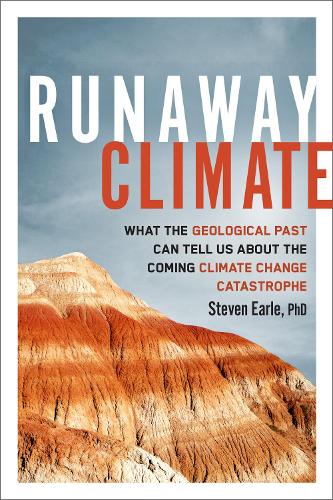
Runaway Climate: What the Geological Past Can Tell Us about the Coming Climate Change Catastrophe
(Paperback)
Publishing Details
Runaway Climate: What the Geological Past Can Tell Us about the Coming Climate Change Catastrophe
By (Author) Steven Earle
New Society Publishers
New Society Publishers
1st September 2024
United States
Classifications
General
Non Fiction
Geology, geomorphology and the lithosphere
Meteorology and climatology
Volcanology and seismology
363.7009012
Physical Properties
Paperback
256
Width 152mm, Height 229mm, Spine 15mm
404g
Description
With tipping points and extreme global warming looming, the key to understanding our climate future lies in our distant past
With rising emissions, we are on track to cause rapid global warming with devastating consequences. But how bad could climate change get and what might it do to planet Earth and humanity
Runaway Climate explores the causes of the Paleocene Eocene Thermal Maximum (PETM) rapid climate-heating, its dramatic impact on life on Earth, and lessons for our climate future.
Fifty-six million years ago our planet experienced a period of intense warming known as the PETM, resulting in a rapid global temperature increase of about 7C. Triggered by natural geological processes over millennia and magnified by strong climate feedback loops, the PETM lasted for about 200,000 years and drastically altered life on Earth. Yet in only a few short decades weve pumped similar amounts of greenhouse gasses into the atmosphere, making the PETM an unsettlingly apt analogy for our current predicament. This deeply cautionary tale explores:
- The runaway feedbacks that pushed the PETMs climate past the tipping point
- Subsequent cascades of environmental devastationfrom plant and animal migrations to ocean acidification, extreme weather, and mass extinctions
- A sobering vision of life on hothouse Eartha hostile world of desertification, sea-level rise, climate refugees, and agricultural collapse
- The urgent need for decisive individual and collective actions to slash carbon emissions, stabilize the climate, and undertake a rapid transition to a cleaner and healthier future.
Scientifically rigorous yet accessible to a wide audience, Runaway Climate is essential reading for everyone committed to understanding and taking action on the climate emergency.
Author Bio
Steven Earle, PhD, has worked as a geologist and developed and taught university-level courses in earth sciences and climate change for over four decades. He is the author of the IPPY award-winning A Brief History of Climate Change and the widely used post-secondary textbook Physical Geology, now in its second edition. A dedicated community activist, he spearheads local engagement with climate change solutions including low-carbon transportation initiatives, heating systems, and land stewardship. Steven and his family live in a nearly net-zero house on a small sustainable farm on Gabriola Island, BC, Canada.
